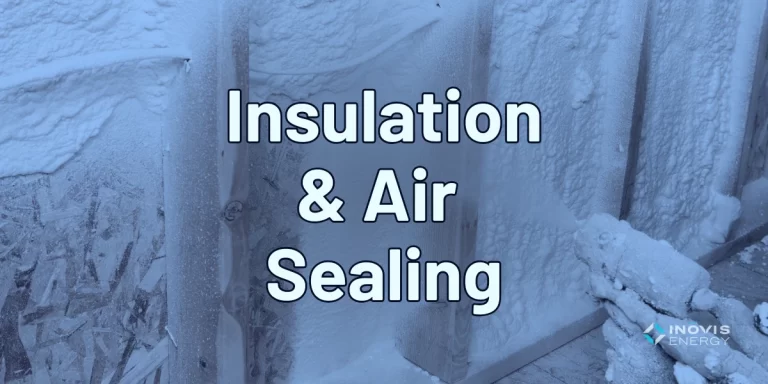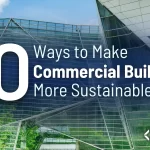Insulation and Air Sealing Solutions to Improve Building Efficiency
Home » Solutions » Building Envelope » Insulation and Air Sealing
Proper insulation and air sealing are critical to reducing heating and cooling losses in large buildings. These upgrades improve thermal performance, support code compliance, and help facilities lower their operating costs while improving comfort and control.
Table of Contents

What Are Insulation and Air Sealing Solutions?
Insulation and air sealing solutions involve adding or upgrading thermal barriers and sealing air leakage pathways within a facility’s building envelope. These improvements reduce energy loss through walls, ceilings, roofs, ducts, and mechanical penetrations—areas where uncontrolled heat transfer and infiltration are common.
Typical insulation and sealing upgrades include:
-
Adding or upgrading attic, wall, and roof insulation
-
Sealing ductwork, piping chases, and drop ceilings
-
Using spray foam, rigid board, or batt insulation
-
Applying aerosol or mastic duct sealant
-
Creating air barriers to reduce heating/cooling loss between zones
These measures are essential for any facility looking to meet energy codes, improve HVAC efficiency, or prepare for electrification or decarbonization goals.
Why Upgrade Insulation and Air Sealing?
Key Benefits:
-
Reduce HVAC energy use by 10–40%
-
Improve thermal comfort and zone consistency
-
Extend HVAC equipment life through reduced runtime
-
Support building electrification by reducing baseline loads
-
Qualify for utility incentives and energy code compliance credits
-
Increase building envelope R-value
-
Improve indoor air quality by limiting unfiltered infiltration
How Insulation and Air Sealing Work
These upgrades improve the building’s ability to resist unwanted heat transfer and control airflow between conditioned and unconditioned zones.
-
Insulation adds thermal resistance (R-value) to walls, ceilings, roofs, and mechanical spaces
-
Air sealing closes leaks around ducts, vents, utility penetrations, drop ceilings, or attic hatches
-
Duct sealing prevents conditioned air from escaping through HVAC system cracks
-
Barrier wraps or rigid boards may be used in industrial or warehouse applications
Combined, these strategies reduce thermal bridging and uncontrolled air exchange, resulting in energy savings and better climate control.
How Insulation and Sealing Reduce Costs
By strengthening the thermal envelope and controlling air movement, these upgrades reduce the load on heating and cooling systems:
-
Fewer HVAC cycles = less energy consumption
-
Reduced temperature swings = lower thermostat overcompensation
-
Duct sealing = more efficient air delivery to occupied zones
-
Controlled airflow = less humidity infiltration or heat loss
Savings are often immediate and measurable, particularly in buildings with aging insulation, exposed ceilings, or large conditioned volumes.
Facilities That Benefit from Thermal Envelope Upgrades
Schools, healthcare facilities, industrial buildings, multifamily properties, government buildings, and any large site with poor insulation or inconsistent temperature control.
Our Installation Process
-
Site Assessment or Audit Review – Identify insulation gaps and leakage zones
-
Thermal Mapping or IR Scanning (Optional) – Assess heat loss patterns
-
System Design – Recommend R-values, insulation types, and sealing strategies
-
Material Selection – Choose between batts, spray foam, board, or wrap
-
Installation – Coordinate efficient installation with minimal disruption
-
Performance Review – Measure results through post-project data or IR validation
Rebates and Funding for Insulation Projects
Many utilities offer custom or prescriptive incentives for envelope insulation and duct sealing—especially when paired with HVAC upgrades or decarbonization planning.
Inovis helps:
-
Identify and apply for applicable incentives
-
Coordinate with electrification or building envelope funding
-
Deliver phased upgrade packages to align with capital cycles
Seal In Savings. Keep Energy Where It Belongs.
Adding insulation and sealing leaks are proven ways to lower heating and cooling costs in large buildings. Let’s assess your facility and recommend the best path to improved performance.

